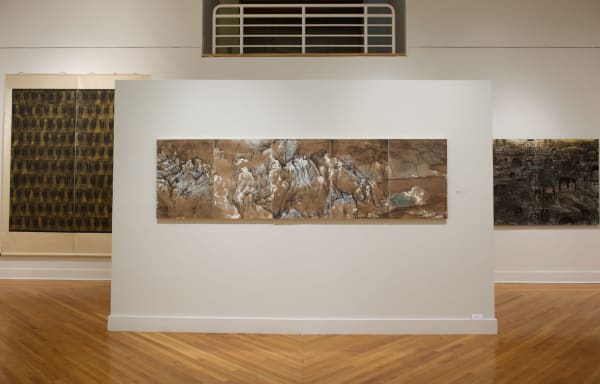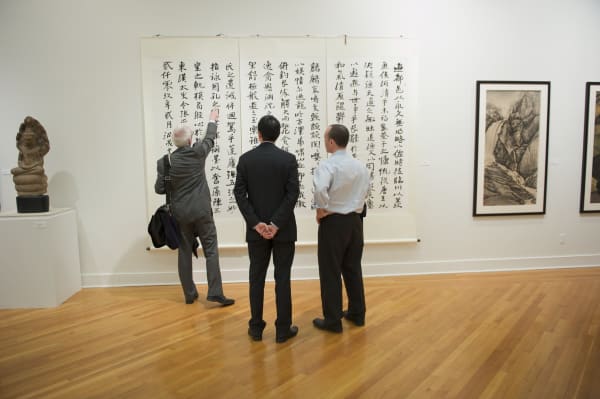This retrospective of over 70 works, organized in conjunction with Queens College’s “Year of China,” reveals the inspiration for Mansheng Wang’s serene, contemplative creations in relation to centuries-old Chinese art, which Wang interprets in a modern idiom. The exhibit includes landscapes, botanical studies, iconic Buddhist imagery, and calligraphy, as well as Wang’s ink and color works on paper and canvas. Art and Artlessness explores the ways in which Buddhism and Chinese tradition have influenced Wang’s form and content, and shows how he transforms classical subjects and conventions into personal interpretations that intersect with Western culture.
In Taiyuan, a city in north central China, Wang began studying Chinese calligraphy and painting on his own at the age of seven. Following graduation from the Classical Chinese Literature Department of Shanghai’s Fudan University in 1985, he worked for over a decade as a director and producer of documentary programs on Chinese and Tibetan art and culture at China Central Television in Beijing. He is also an essayist, and his writings as well as his artwork can be seen in the catalogue accompanying this exhibition and on his website, www.manshengwang.com.
Wang’s style is informed by the artist-scholar tradition of self-cultivation and art as a meditative practice. His recent work touches upon environmental challenges, the need for balance, and the loss of silence in modern life. Wang realizes his delicately rendered, figurative art through a number of media, including ink and color on various papers, ceramics, and woodblock and other printing techniques. Selected Chinese objects from the Museum’s collections will contextualize the artist’s sources and inspiration, along with objects from the artist’s personal archive of the calligraphy of various dynasties.




